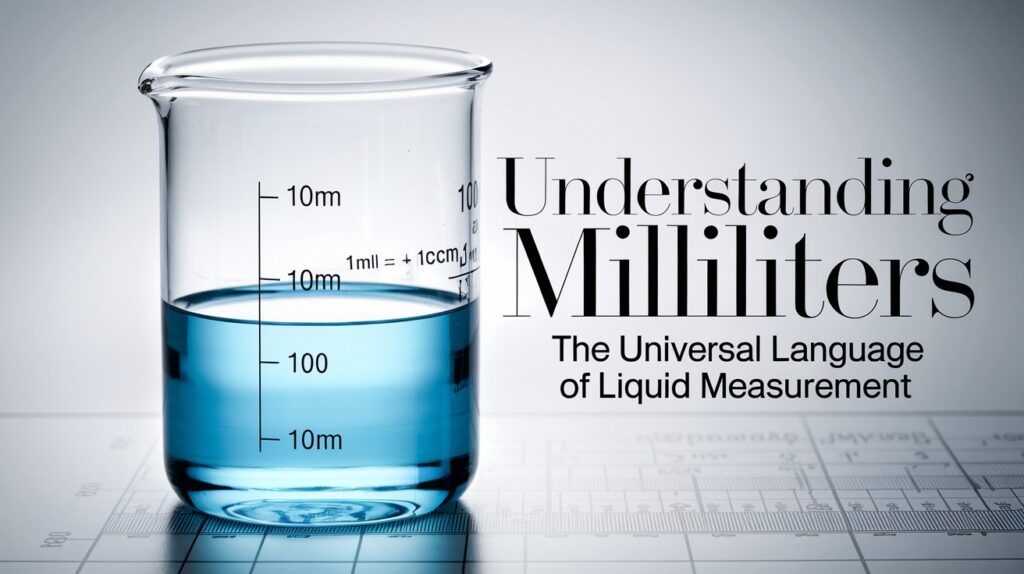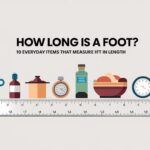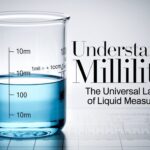When you’re cooking up a storm in your kitchen or measuring medicine, you’ll often encounter milliliters. These tiny but mighty units of volume measurement make a world of difference in getting things just right. Let’s dive into everything you need to know about this essential metric system measurement.
What Is a Milliliter?
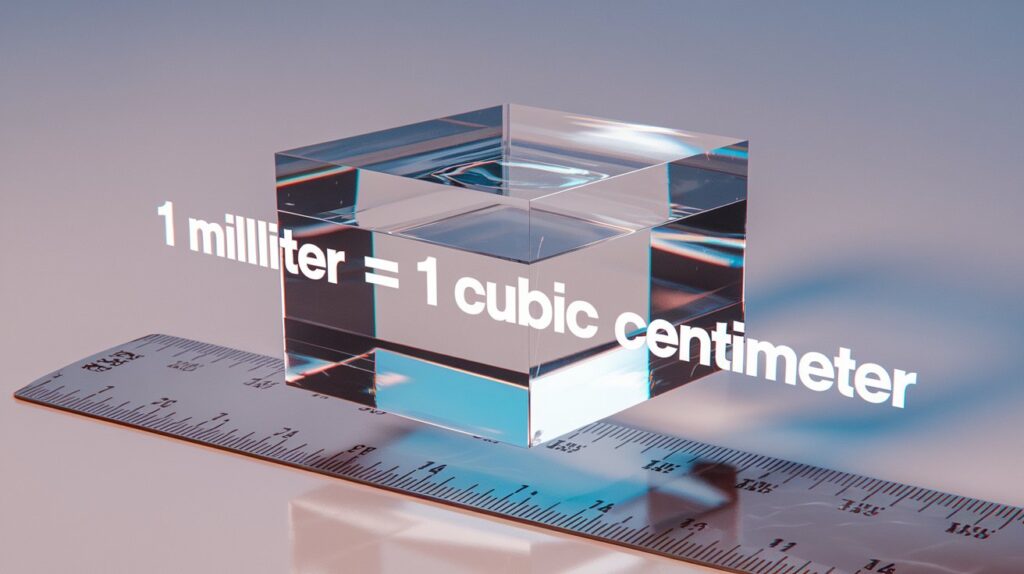
A milliliter (abbreviated as ml, mL, or mℓ) serves as the backbone of liquid measurement in the metric system. Think of it as a small cube of liquid, exactly one cubic centimeter (cc) in size. When you’re measuring your favorite drink or following a recipe, each milliliter represents a precise amount that’s trusted in laboratories and kitchens worldwide.
In the world of scientific measurements, a milliliter holds special significance because it relates directly to water’s weight. One milliliter of pure water at room temperature weighs exactly one gram, making it a perfect reference point for both volume and mass calculations.
Interactive Discussion: How Much is a Milliliter?
Join John and Kapela in this engaging discussion about milliliters, key facts, and conversions you need to know.
What Is the Difference Between the Metric and Imperial System?
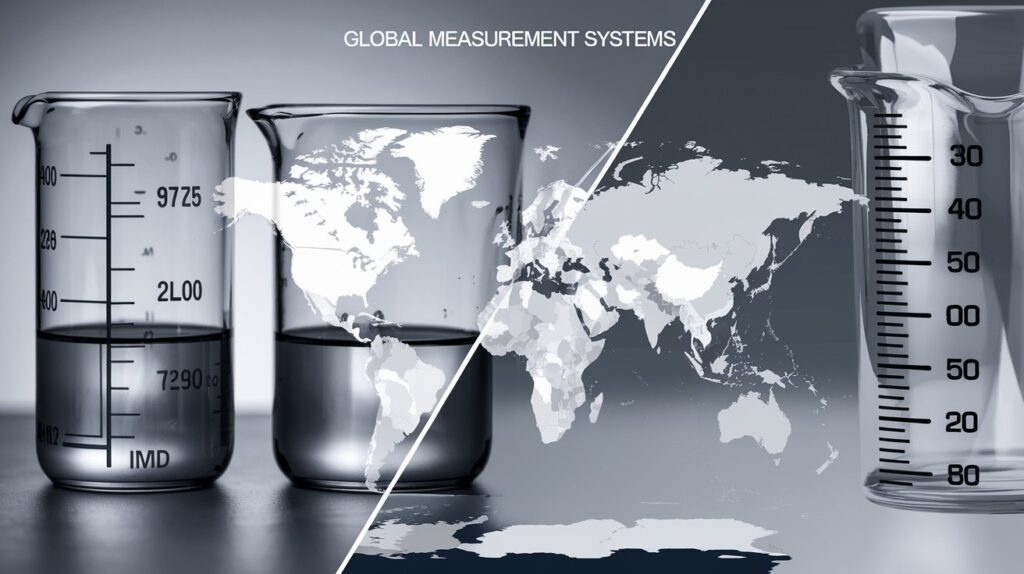
The United States stands among just three countries worldwide (alongside Myanmar and Liberia) that haven’t fully embraced the metric system as their primary measurement standard. The story dates back to the influence of the British Empire, though even Great Britain has largely moved to metric measurements since 1965.
In the Imperial system, you’ll encounter familiar terms like cups, pints, and gallons. Meanwhile, the metric system relies on clean decimal relationships – 1000 milliliters make up one liter, making volume conversion straightforward. This difference affects everything from cooking conversions to medical dosage measurements.
What Is the Difference Between the Metric and Imperial System?
| Measurement Type | Metric System | Imperial System |
|---|---|---|
| Length | 1 meter (m) | 39.37 inches |
| Volume | 1 liter (L) | 2.11 pints |
| Mass | 1 kilogram (kg) | 2.20 pounds |
| Temperature | 0 °C (Freezing) | 32 °F (Freezing) |
| Area | 1 hectare (ha) | 2.47 acres |
| Speed | 100 kilometers/hour (km/h) | 62.14 miles/hour |
| Pressure | 1 pascal (Pa) | 0.0209 psi (pounds per square inch) |
| Fuel Economy | 5 liters/100 km | 47 mpg (miles per gallon) |
| Cooking | 1 milliliter (mL) | 0.034 fluid ounces |
| Distance | 1 kilometer (km) | 0.621 miles |
Uses of a Milliliter
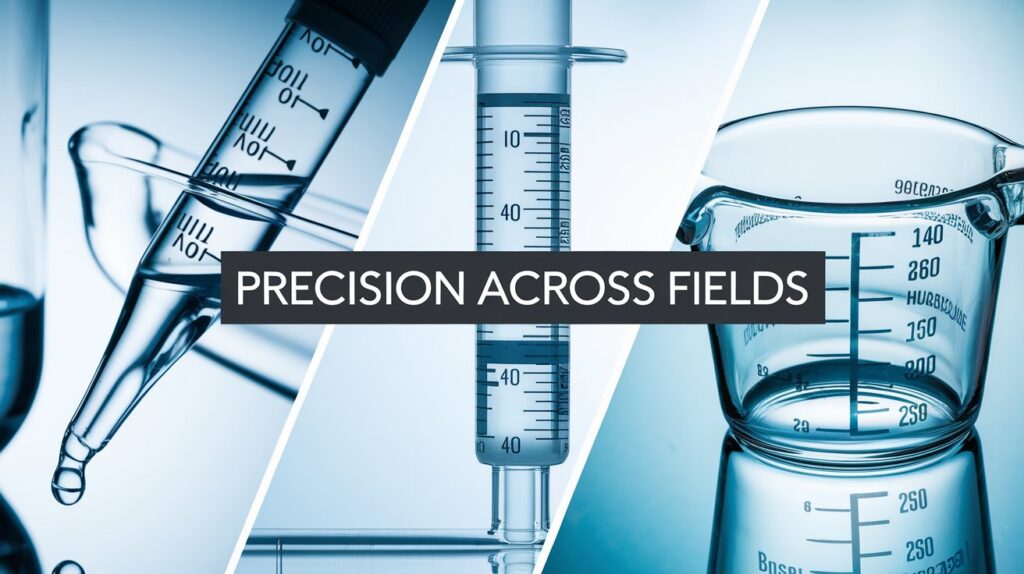
The versatility of milliliters spans across multiple fields. In medicine, precise liquid measurements ensure accurate dosing – your pharmacist carefully measures medications in milliliters for safety. Within laboratory settings, scientists rely on milliliter measurements for everything from creating solutions to analyzing chemical properties.
In your kitchen, recipe measurements often call for milliliters, especially in modern cookbooks that embrace international standards. Professional chefs prefer milliliters for their precision, particularly in baking measurements where accuracy determines success. Even your favorite coffee shop measures syrups and flavorings in milliliters.
Must Explore : What Are The Dimensions Of A Football Field? A Detailed Breakdown
How Much is a Milliliter? Or 1L is Equal to How Much mL?
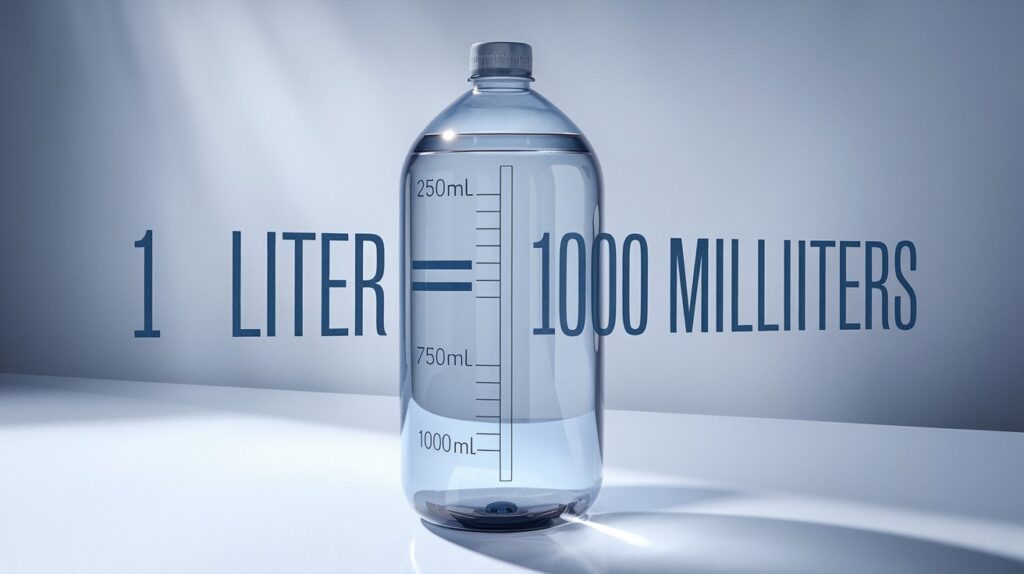
Understanding the relationship between liters and milliliters forms the foundation of liquid capacity measurements. One liter (1L) equals exactly 1000 milliliters (1000mL). This clean decimal relationship makes the metric system particularly user-friendly for volume conversion.
Think about a standard water bottle – most hold 500mL, which is half a liter. This measurement system’s simplicity helps everyone from medical professionals to home cooks make quick calculations. For reference, one milliliter equals 0.004 cup, 0.002 pint, or 0.001 quart in US customary system measurements.
How to Convert Milliliters?
Converting milliliters to other units requires understanding some basic relationships. When working with liquid conversion, remember that 1 milliliter equals 1 cubic centimeter (cc), making it easy to visualize. For precise quantities, professional kitchen tools like graduated cylinders provide accurate measurements.
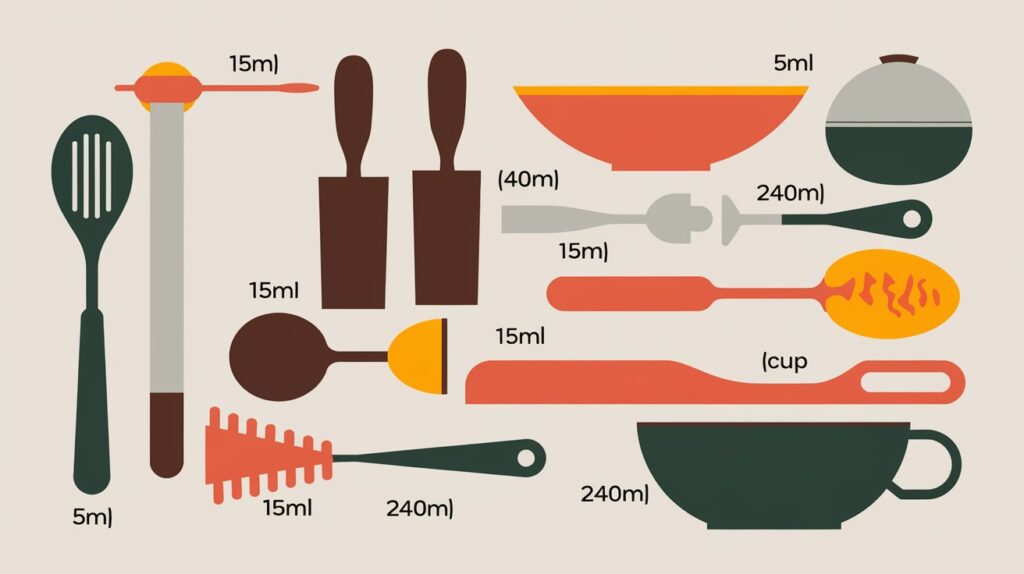
Here’s a comprehensive conversion table for common measurements:
Milliliter Conversion Chart
| Milliliters (mL) | US Customary/Imperial Equivalent |
|---|---|
| 1 mL | 0.034 fluid ounces |
| 5 mL | 1 teaspoon |
| 15 mL | 1 tablespoon |
| 30 mL | 1 fluid ounce |
| 240 mL | 1 cup |
| 1000 mL | 1 liter/33.8 fluid ounces |
How Many Milliliters in a Cup?
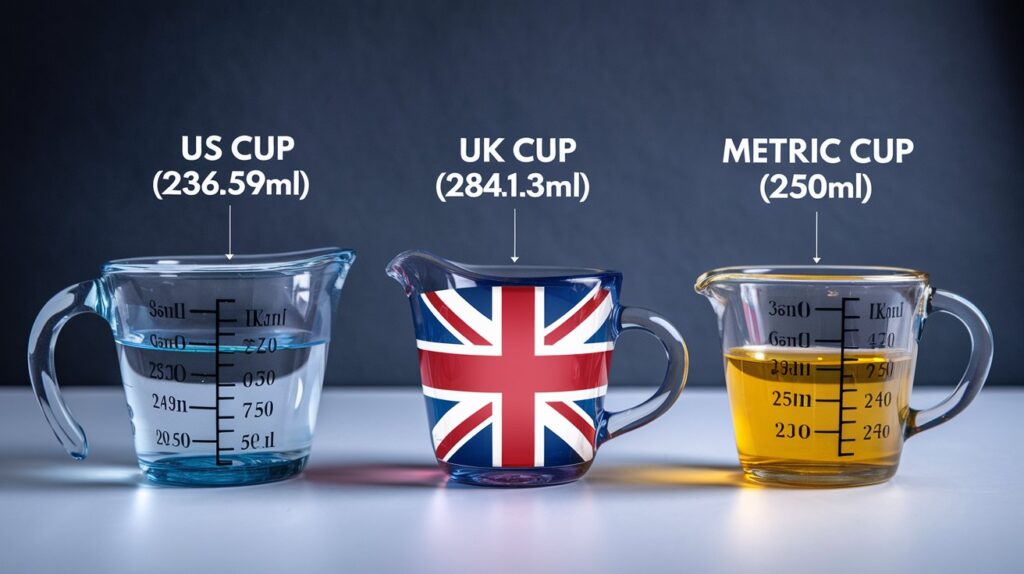
A standard US cup contains 236.59 milliliters, though for practical cooking conversions, this is often rounded to 240 milliliters. In the UK, a standard cup measures slightly more at 284.13 milliliters, which can cause confusion when following international recipes.
Professional kitchens often use measuring cups calibrated in both systems to avoid conversion errors. This difference highlights why many modern recipes specify measurements in milliliters – it eliminates confusion between different cup standards across countries.
Milliliter Converter
*Calculations are rounded to 2 decimal places for practical use
Must Visit : How To Measure Room Dimensions For Furniture Layout?
How Many Milliliters in a Half Cup?
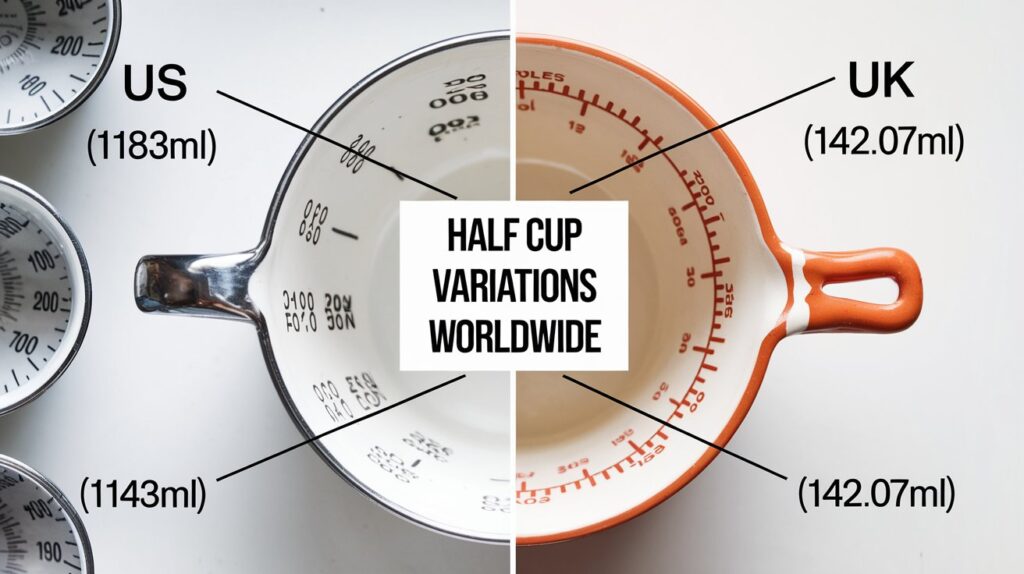
Half a US cup equals approximately 120 milliliters, though the precise measurement is 118.3 milliliters. In British measurements, you’re looking at 142.07 milliliters for half a cup. These variations demonstrate why precision matters in certain types of cooking.
For home cooks working on smaller portions, understanding half-cup measurements proves essential. Kitchen tools marked with both measurements help ensure accuracy whether you’re following American or international recipes.
| Measurement System | Milliliters (mL) | Notes |
|---|---|---|
| US Half Cup | 120 mL | Approximate Measurement |
| Exact US Half Cup | 118.3 mL | More precise value |
| UK Half Cup | 142.07 mL | Different standard |
| Metric Half Cup | 125 mL | Common metric measurement |
| Baking Measurement | 120 mL | Standard for recipes |
| Functional Use | Approximately 4.06 fl oz | Fluid ounces equivalent |
| Cooking Conversion | Half of 240 mL | Half cup reference |
| Professional Kitchen | Measured accurately | For recipe success |
| Everyday Use | Approx. 120 mL | Common household use |
How Many Milliliters in a Third Cup?
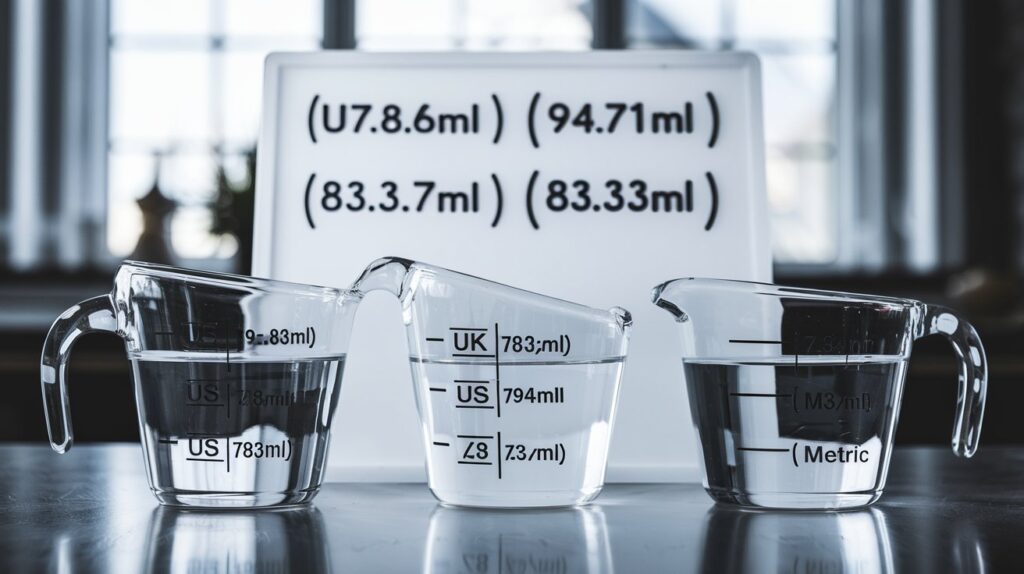
A third of a US cup measures approximately 80 milliliters, with the exact measurement being 78.86 milliliters. For comparison, in the British system, a third cup equals 94.71 milliliters. When working with recipe measurements, this difference becomes particularly important in baking where precision affects texture and consistency.
Professional bakers often prefer working with metric system measurements because they eliminate the need for fractional cups. Instead of calculating thirds, they can simply measure 83.33 milliliters for absolute precision using specialized measuring cups.
How Many Milliliters in a Quarter Cup?
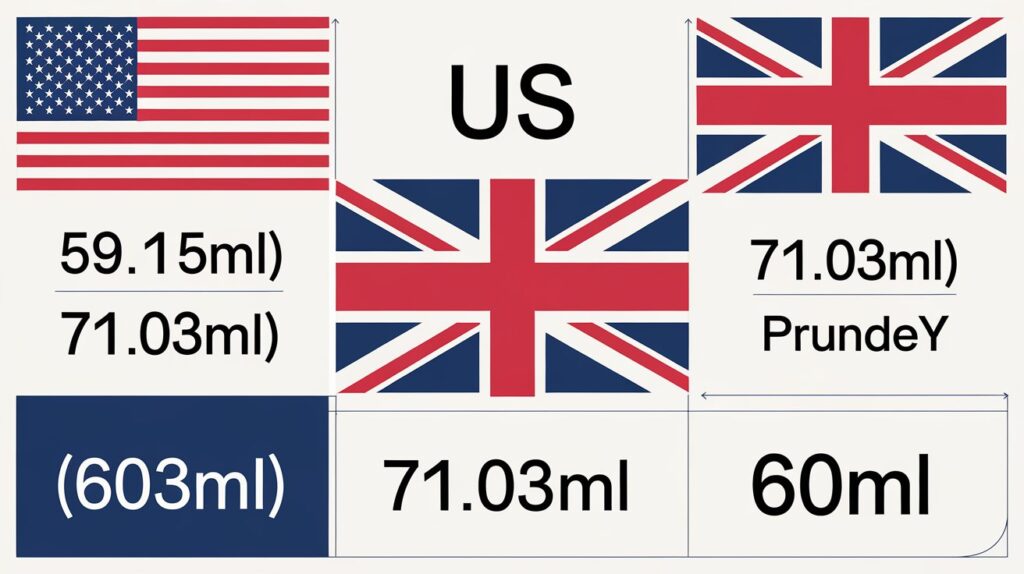
A quarter cup in US measurements equals 60 milliliters, though the exact figure is 59.15 milliliters. British measurements would put a quarter cup at 71.03 milliliters. For kitchen tools and recipes, this is often rounded to 62.5 milliliters for practical purposes.
In laboratory settings and medical dosage calculations, these small differences matter significantly. That’s why healthcare providers and scientists always specify which measurement system they’re using to avoid potentially dangerous confusion.
How Many Milliliters in an 8 oz Cup?
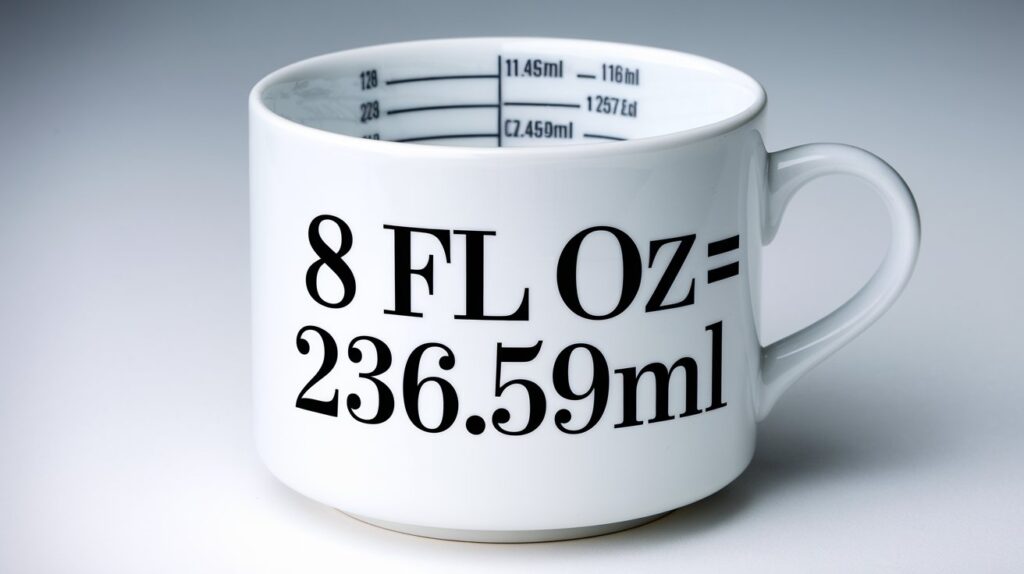
An 8 fluid ounces cup contains approximately 236.59 milliliters. This measurement serves as the standard US cup size and forms the basis for most American recipe measurements. Understanding this conversion helps when adapting recipes between measurement systems.
The relationship between fluid ounces and milliliters remains constant: each fluid ounce equals roughly 29.57 milliliters. This conversion factor proves invaluable when working with recipes that mix imperial system and metric system measurements.
Why One Cup Doesn’t Always Equal One Cup
The fascinating world of volume measurement reveals that a cup isn’t always just a cup. Different countries maintain their own standards: A US cup (236.59 milliliters) differs from a UK cup (284.13 milliliters), which differs from a metric cup (250 milliliters). These variations emerged from historical differences in measurement systems.
In professional scientific measurements and commercial food production, this variation led to the adoption of milliliters as a standard unit. Milliliters provide consistent precise quantities regardless of location, eliminating confusion in international trade and scientific exchange.
| Measurement System | Cup Size (mL) | Notes |
|---|---|---|
| US Cup | 236.59 mL | Standard measurement in the USA |
| UK Cup | 284.13 mL | Slightly larger than US cup |
| Metric Cup | 250 mL | Standard in metric countries |
| Australian Cup | 250 mL | Similar to metric cup |
| Canadian Cup | 250 mL | Commonly used in Canada |
| Japanese Cup | 200 mL | Different standard measurement |
| Indian Cup | 240 mL | Common in Indian cooking |
| Cooking Conversion | Varies by recipe | Always check for specifications |
| Fluid Ounce Equivalent | 8 fl oz = 236.59 mL | US fluid ounce reference |
| Importance of Precision | Critical for baking | Accurate measurements ensure success |
Check this out : How Large Is Earth In Kilometers And Miles? Explore Earth’s Dimension
The Milliliter: Facts and Figures
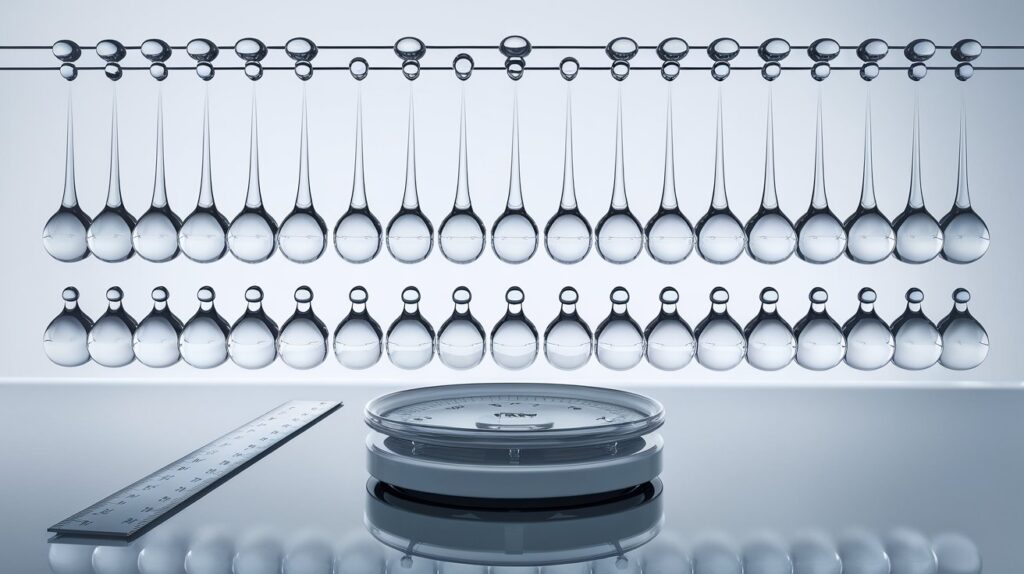
A single milliliter can hold approximately 20 drops of water, making it a crucial unit for medical dosage measurements. In scientific applications, the relationship between volume and density means that one milliliter of water weighs exactly one gram at room temperature, providing a convenient reference point.
Professional laboratory equipment like pipettes can measure fractions of milliliters with incredible accuracy. A typical teaspoon holds 4.92 milliliters, while a tablespoon contains 14.78 milliliters, measurements that prove crucial in both cooking and medicine.
Common Household Items: Milliliter Equivalents
Additional Units and Conversions
Understanding smaller and larger units helps put milliliters in perspective. A microliter equals one-thousandth of a milliliter, crucial in laboratory work. Meanwhile, a kiloliter equals 1000 liters or 1,000,000 milliliters, often used in industrial liquid measurement.
For everyday use, knowing that common household items like medicine cups typically show both milliliter and teaspoon markings helps bridge the gap between measurement systems. A standard drinking glass typically holds between 200 to 250 milliliters.
Digital vs. Analog Measurement Tools
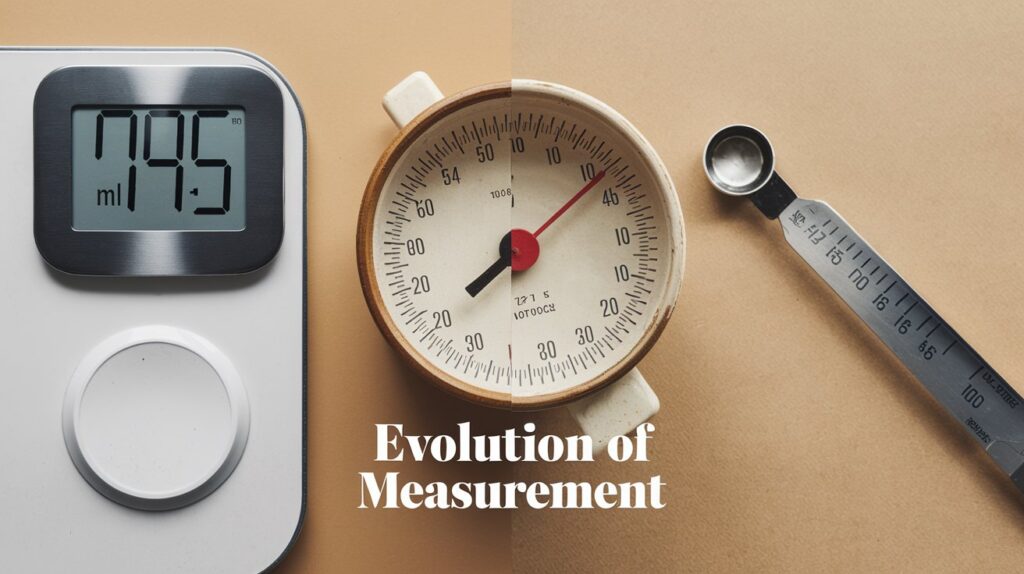
Modern liquid measurement tools have evolved significantly. Digital measuring devices provide readings in multiple units simultaneously, eliminating the need for manual volume conversion. These tools prove especially valuable in scientific measurements and professional kitchens.
Traditional analog measuring cups and spoons remain popular in home kitchens. However, the rise of digital kitchen scales that can measure in both grams and milliliters has revolutionized home cooking and baking measurements, offering professional-level precision.
Measuring Tools Comparison Guide
- Digital Scale ±0.1mL
- Digital Pipette ±0.01mL
- Digital Measuring Cup ±1mL
- Measuring Cups ±5mL
- Measuring Spoons ±1mL
- Graduated Cylinder ±2mL
- Volumetric Flask ±0.04mL
- Burette ±0.05mL
- Micropipette ±0.002mL
You Might Like: How Long Is 400 Meters? 18 Things That Are 400 Meters Long
Practical Applications in Different Fields
The versatility of milliliters extends beyond the kitchen and laboratory. In mechanics, engine oil and coolant measurements rely on milliliter precision. The medical field uses milliliters for everything from medication dosing to intravenous fluids, while the nutrition industry uses them for supplement portions.
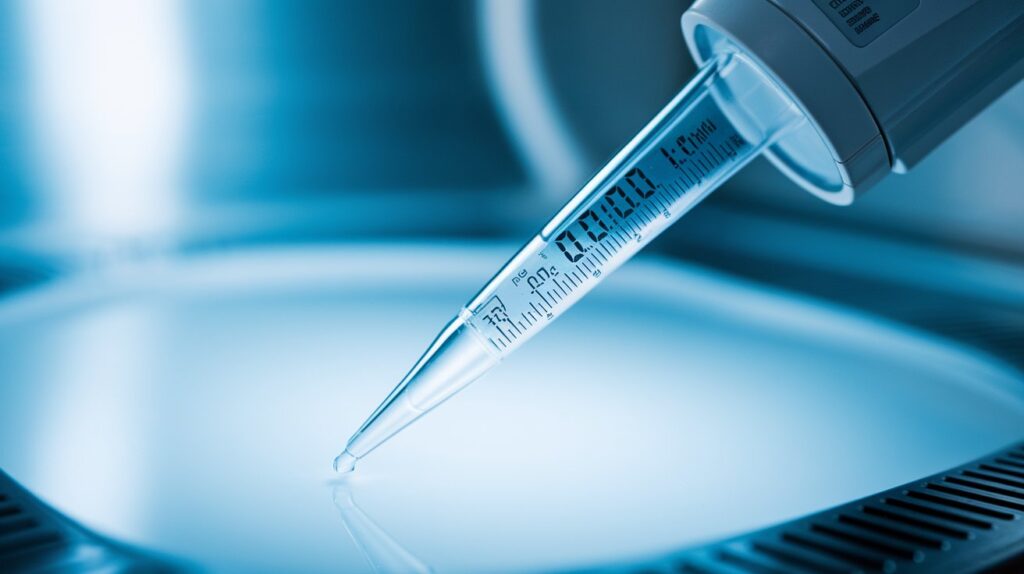
In commercial engineering and manufacturing, milliliter measurements ensure product consistency. For instance, beverage companies rely on precise milliliter measurements for packaging, while cosmetics manufacturers use them for product formulation.
Interactive Measuring Demonstration
Learn proper measuring techniques with this interactive demonstration
Conclusion
Understanding milliliters opens up a world of precise liquid measurement across multiple fields. Whether you’re cooking, following a medical dosage, or working in a laboratory, knowing how to work with milliliters proves invaluable. The metric system‘s logical structure makes conversions straightforward once you grasp the basics.
Remember that while different measurement systems exist, milliliters provide a universal language for measuring liquids. Their precision and standardization make them ideal for everything from casual cooking to scientific research.
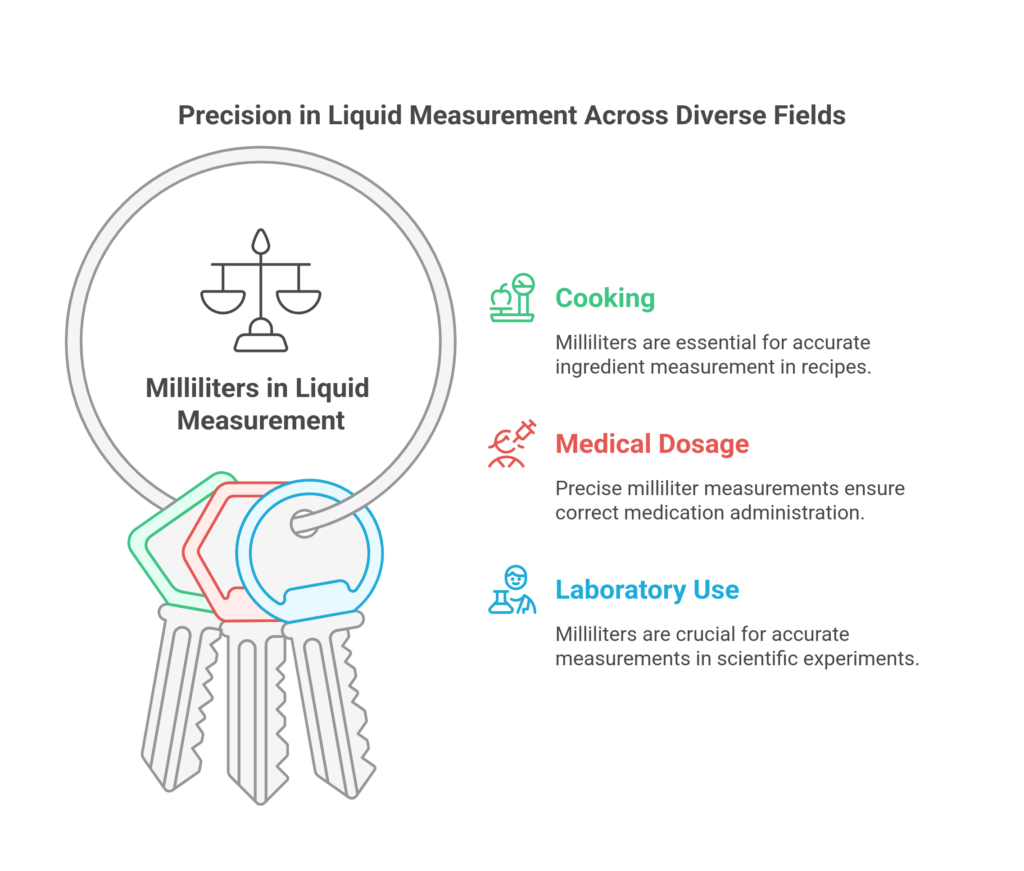
Frequently Asked Questions
Also Like To Know This: How Big Is A Standard Car Compared To A Bus In Dimension?

John Smith and Kapela Rodriguez, engineering experts and creators of Measured Inches, transform complex measurements into simple, everyday examples. As mechanical and civil engineers, they combine their technical expertise to help readers visualize different units through practical comparisons. Their clear approach has made Measured Inches a trusted resource for understanding measurements.

